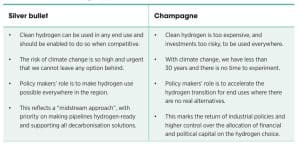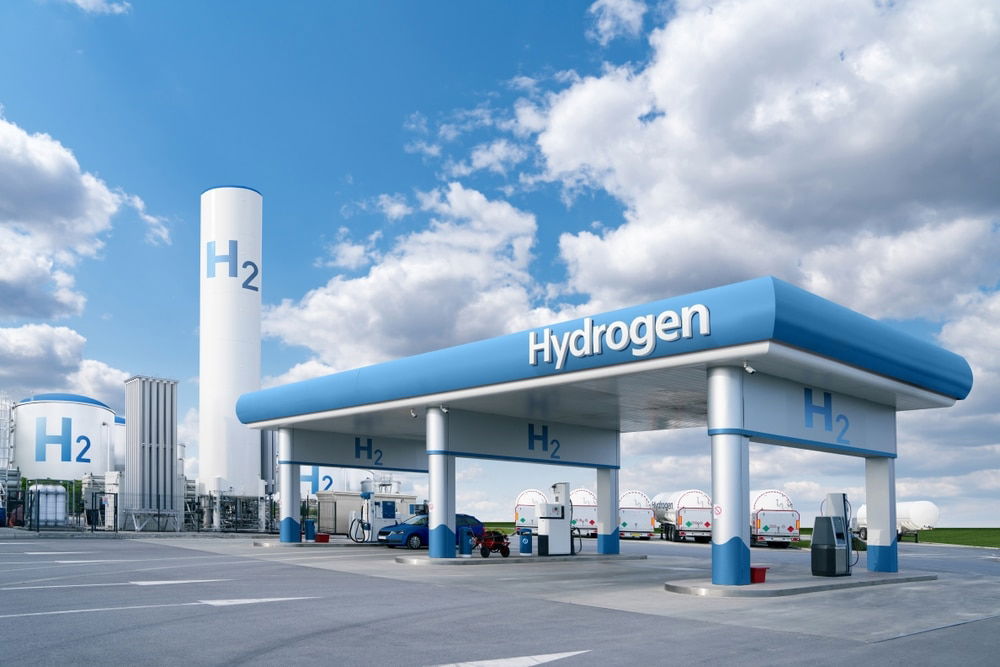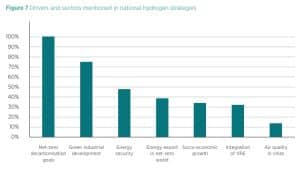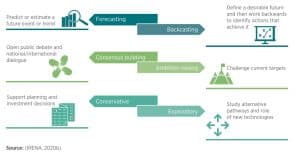From combating climate change to boosting economic competitiveness, green hydrogen offers multiple solutions to some of today’s biggest challenges. Significantly, it’s a zero-emission fuel that has the potential to transform the automobile industry.
As more countries embark on their hydrogen journey, there’s stiff competition riding for every nation. Governments are apprehensive about not missing out on anything. This means each nation wants to set ambitious goals and is under pressure to keep up.
However, a rush to adopt hydrogen policies without careful consideration can lead to misguided investments. This phenomenon named “siren call,” by IRENA, has a high risk of policy failure if pursued without a realistic assessment of local capabilities and requirements.
Therefore, countries that align their hydrogen strategies with specific policy drivers are most likely to succeed in a robust and resilient hydrogen sector.
Green Hydrogen Strategy: “Silver Bullet” vs. “Champagne” Approach
IRENA has decoded an interesting way to explain the diverse national hydrogen strategies that are in place. The two major perspectives are the “silver bullet” and the “champagne” approaches. Each approach represents a distinct stance on the role of hydrogen in achieving decarbonization goals and informs how policy and investments shape the sector.
The “Silver Bullet” Approach: Hydrogen Everywhere, All at Once
The “silver bullet” approach positions hydrogen as a flexible, wide-reaching solution, with applications spanning from heavy industry to residential heating. Nations that support this approach view climate change as a pressing issue that demands exploring all possible pathways to cut emissions.
IRENA emphasized that this strategy leans on a “free-market mindset”, where policymakers are involved in the following roles:
- balance supply and demand
- set up market structures
- support the development of necessary infrastructure.
Furthermore, the “silver bullet” approach encourages early investments in hydrogen transport and storage. This is because such nations consider adopting these two mechanisms broadly across all sectors.
For example, countries like Australia, Canada, and the United Kingdom often embrace the “silver bullet” approach. These nations, which produce fossil fuels, see potential in developing and exporting blue hydrogen and are already investing in decarbonization across industries.
Having production-based economies and access to advanced technologies, these countries support hydrogen as a key driver of their sustainability goals. All the more, they aim to decarbonize areas like building heating and transportation with the “silver bullet” approach.
The “Champagne” Approach: Hydrogen for Specific High-Value Uses
In contrast, the “champagne” approach is a more cautious way of viewing green hydrogen. Simply put it is considered costly and risky compared to other established solutions. This approach advocates using hydrogen selectively in areas where alternatives are limited or cannot be accessed. The purpose is to avoid diverting resources from the proven technologies that are already being used.
Countries with strong renewable energy resources, such as Austria and Kenya, generally favor this view. For them, the hydrogen strategy focuses on decarbonizing high-energy industries or sectors like aviation and maritime, where electrification remains a challenge.
Elaborating further, the “champagne” approach is a reflection of the industrial policy mindset, with policymakers playing an active role in shaping hydrogen development. In this, investments mainly focus on applications where other decarbonization options aren’t viable.
IRENA revealed that Austria prioritizes hydrogen for high-temperature industrial processes and aviation. The country optimizes hydrogen use within a broader energy transition strategy, making the shift to green energy both practical and sustainable.
A quick summary of these two approaches is below:

- READ MORE: Microsoft and ESB Launch Groundbreaking Green Hydrogen Pilot to Decarbonize Dublin Data Centers
Key Drivers Fueling Green Hydrogen Development
As mentioned at the beginning, various drivers are pushing governments to support green hydrogen. So, what are the main motivators behind hydrogen’s growing role?
The Hard-to-Abate Sectors
While electrification can lower emissions in some areas, certain industries, like steel, cement, and chemicals, are challenging to decarbonize and involve energy-intensive processes. This is why these “hard-to-abate” sectors need alternatives beyond direct electrification. Notably, green hydrogen offers a promising low-carbon solution for this sector.
However, beyond industry use, there are many more economic opportunities through the production of hydrogen-related components, like compressors and control units, etc.
The countries focused on green industrialization- be it through the “silver-bullet” or “champagne” approach are keen to use green hydrogen in their national strategies.
A Sustainable Economy
Countries that depend on fossil fuels are now looking to green hydrogen as a way to sustain their economies. By using renewable resources, these nations can develop new export markets focused on green hydrogen. Even countries without a long history in fossil fuels are also exploring hydrogen exports to meet rising global demand and diversify their revenue sources.
Subsequently, this shows the flexible nature of hydrogen- meaning it can be produced worldwide. This diversification reduces geopolitical risks and gives nations more control over their energy future.
Another significant thing is energy security, especially for nations reliant on imported fuels. Therefore, developing a robust domestic green hydrogen supply can help these countries reduce imports, stabilize energy prices, and lower their vulnerability to global market changes.
Long-Term Renewable Energy Storage
As renewable energy usage increases, seasonal fluctuations can create power supply issues. Hydrogen offers a solution for large-scale, long-term storage, helping balance renewable power systems.
When energy production exceeds demand, the surplus electricity can be used to produce hydrogen which can be stored for the future. This capability is essential for countries transitioning to renewables, as it helps avoid power waste and reduces risks associated with variable renewable energy supplies.
Image: Common uses of long-term energy scenarios
Improving Urban Air Quality
As hydrogen fuel cell vehicles emit no pollutants they offer a cleaner alternative to diesel and gasoline vehicles. This is especially valuable in cities with high pollution levels.
Apart from the U.S., U.K., and Australia, China is also promoting hydrogen in mobility projects to cut oil dependence and reduce air pollution. This has a direct benefit on public health and the environment.
As these drivers create interest in hydrogen, each country designs its strategy to match its unique energy needs, resources, policy goals, and most importantly its budget. However, the final aim is to create sustainable and resilient hydrogen ecosystems.



